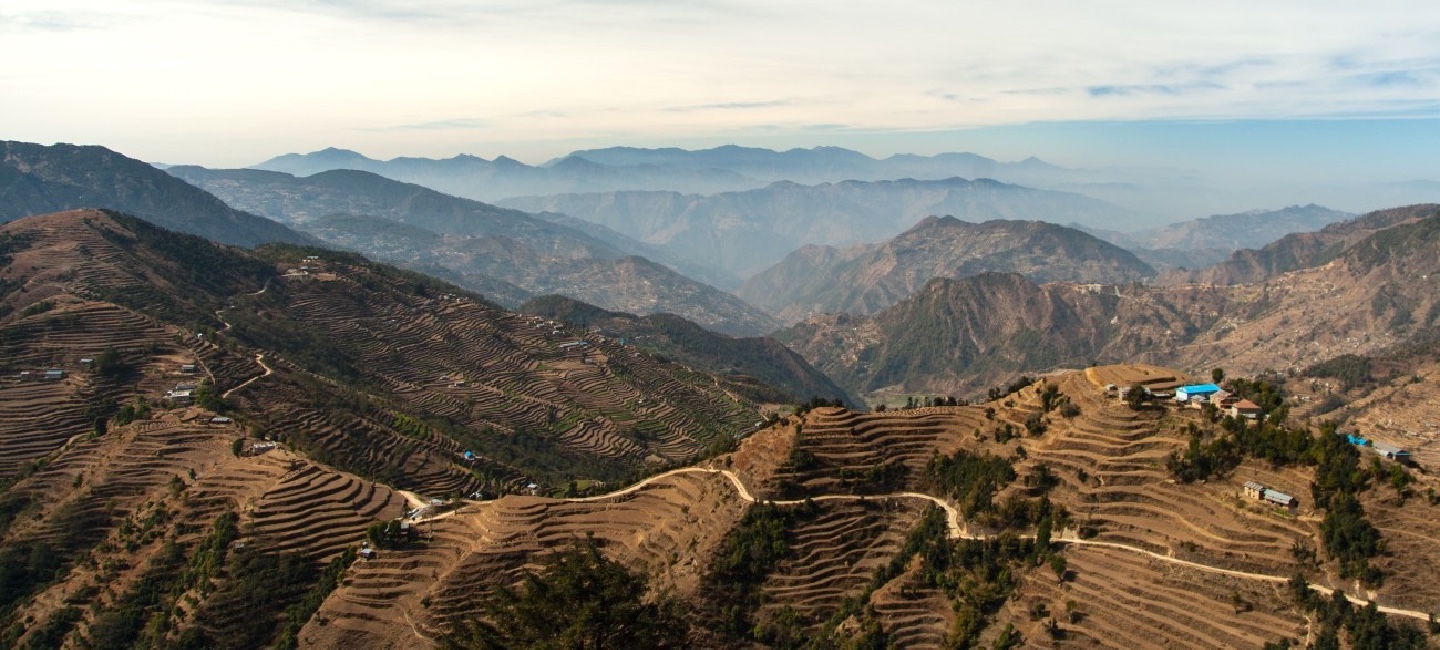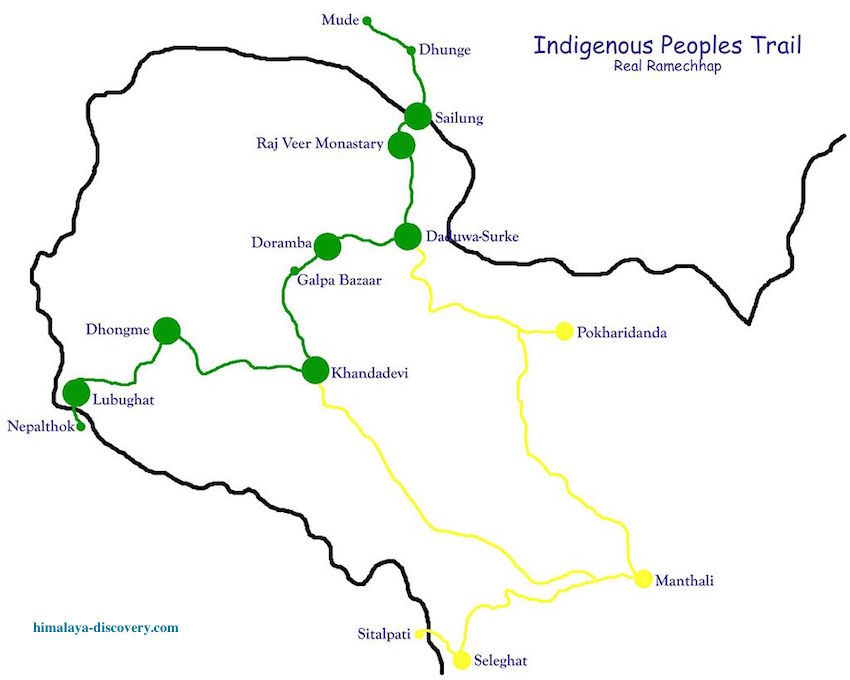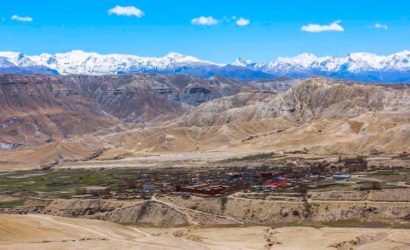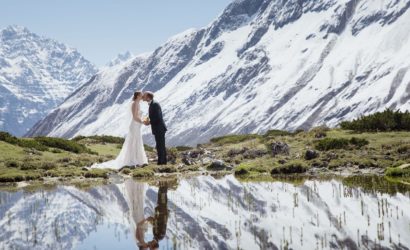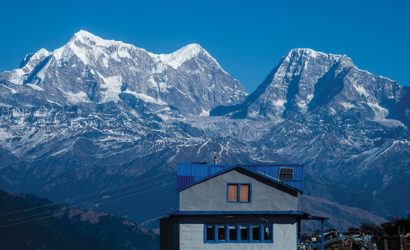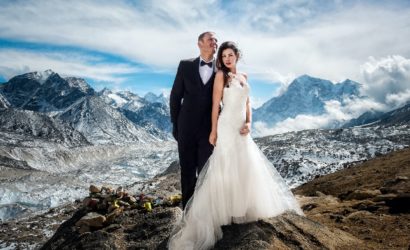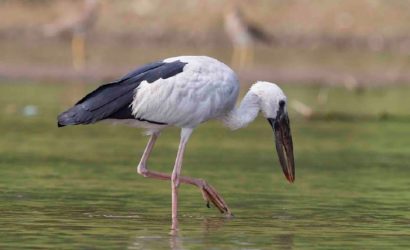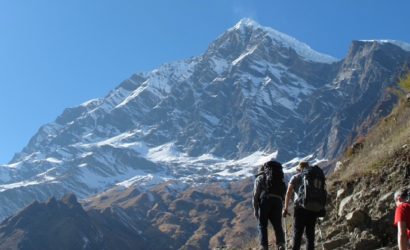Indigenous People Trail is a classic route short and easy trek to escape the congestion of commercialized trekking routes and get ‘off-the-beaten-track’ to experience the real Nepal. The “Indigenous People (IP) Trail” or IP trail culture trek takes place in Ramechhap District, 130km east of Nepal’s Capital, Kathmandu.
The First of its kind in Nepal, the IP Trail offers unique, living exposure to one of the most culturally diverse areas of Nepal combined with the beautiful natural landscape. Sailung Peak in the north and the golden Sun Koshi River flowing along the south mark the start/end point respectively of the IP Trail which offers a unique and natural combination of ethnic cultural diversity coupled with breathtaking Himalayan and mid-Hill Panoramas.
Newly open for trekking routes in Nepal, A culture trek par excellence, without a doubt one of the best trek in Nepal. this trek is possible throughout round the year, although, when you are travelling into spring season the Rhododendrons are in blooming. the trail has been given a name of ‘Indigenous People Trail’ (IP Trail) in honor of the six major ethnic settlements in the area.
The trekkers are welcomed into the culture and lifestyle of indigenous communities including Sherpa, Newar, Thami, Tamang, Yolmo and Majhis in this lively cultural route. The two major religions in Nepal – Hinduism and Buddhism are ever present in the form of gods and goddesses, temples, stupas, gumbas, monasteries and sacred caves.
Getting Indigenous People Trail
It is an easy trek. Starting from the trailhead at Dunghe and walking downhill to Lubughat or start at Nepalthok and trekking uphill to Dunge via Sailung. Ramechhap-bound buses run daily from Ratna Park bus station in Kathmandu at 6.30am to Mude.
Buses ply the five-hour return trip to Kathmandu via Nepalthok from the other river bend in Lubughat. Hiring a guide is helpful and necessary. No need to book accommodation as homestays are provided by the villagers along the way.
Upon your arrival the Kathmandu airport after completing your custom formalities Visa, etc. pick up your luggage and look for our airport representative from Himalaya Discovery, who will display your name on the board at the arrival gate. You will be greeted by our representative and transferred to your hotel by private tourist vehicle. Overnight in Kathmandu.
Today is free for sightseeing in Kathmandu. You may wish to visit Durbar Square in the heart of the old city where the old Royal Palace, with its intricate woodcarving is located. The whole area is a maze of temples and images. Leading away from the square in all directions are narrow alleys, full of the most amazing variety of shops and stalls.
Some of these landmarks are considered World Heritage Sites including the historic Bhaktapur Durbar Square, the famous ‘Monkey Temple’ Swayambhunath and Buddhists shrine Buddhanath which is one of the largest Stupas in the world.
There will also be a full trip briefing today with gear check. In case you need to hire or buy equipment locally there will be time to do this today. Overnight in Kathmandu.
We begin our trek at Napalthok after 4 hours driving by private vehicle from Kathmandu. After 45 minutes short walk along the banks of the Sun Koshi River, we reach at Lubhughat (533 meters) a small village of Majhi.
You will meet the Majhi people, renowned for their fishing expertise and their cultural milieu. In the evening Majhi culture dance presentation and overnight at local homestay.
After breakfast leaving Lubughat, we begin our journey with a gently steep climb to Dongme. En route you will enjoy newly renovated trails leading majestic views of Sun Koshi river and the valley of Lubhughat confluences, then we arrive at Dongme 1982 m.
Dongme is a large Yolmo Tamang village. In the evening special Buddhist Monk culture Dance Presentation and Overnight at homestay .
The walking is easy and after passing through the beautiful village we reach Galba Bazaar. The route gently ascends to the sacred Hindu shrine atop Aglehwari Danda where you will be rewarded with stunning views of the Himalaya and the rolling Mahabharat hills.
Then we reach at the biggest Tamang village Doramba. The Tamang Culture dance presentation in the evening or morning depending on how the days trekking went. Overnight at homestay.
Today, the trail continues ascent to Daduwa, traversing forest-covered hills and the terraced fields of Daduwa. On reaching the Sherpa village Daduwa, you will see the local Buddhist Monastery, Gompas, Prayer flags, Chortens and Mani stones. In the evening Sherpa traditional culture dance presentation and Overnight at homestay.
During the ascent to Sailung along with the journey, you will visit Rajveer monastery and receive a blessing from the Monks. The trail passes through rhododendrons forest with a wide variety of native tree, shrubs and different species of birds. We arrive at Khola Kharka where you will spend the night in the newly established Community lodge / tented camp.
The last day of the trek, wake up early to reach the summit of Sailung atop during sunrise over the Eastern Himalayas. At 3,146 meters Sailung offers magnificent views of the Annapurna, Langtang, Ganesh Himal, Rowaling, Everest ranges. In the South, the Mahabharata hills roll over the Sun Koshi River sliding down to the Tarai lowlands.
At the highest point of Sailung, the main rituals are Buddhist offerings to the souls of the deceased. During the festival of Saun Purnima, held on the full moon of July / August, Tamang pilgrims crowd around the ruined Chortens at this holy place.
Nowadays, there are no more blood sacrifices at Sailung. Leaving Sailung, the trail continues descend downhill to Dunge Bazaar. Along the trail, you will see the splendid view of Mount Gaurishankar (7,134 meters). Overnight at Maga Deurali homestay.
5 hours drive back to Kathmandu, the rest of the afternoon is free. Overnight in Kathmandu.
Today is rest and relax throughout the day. If you get interested to take some gifts from Nepal for friends and relatives, visit some nearby shops or go out in Thamel for typical Nepalese goods which can be assisted by our guide or you can do it yourself too.
In the evening we will have a farewell dinner in a traditional Nepalese restaurant with cultural performances. Overnight at hotel in Kathmandu.
The trip concludes! Our airport representative will drop you to the airport for your flight departure from Nepal.

